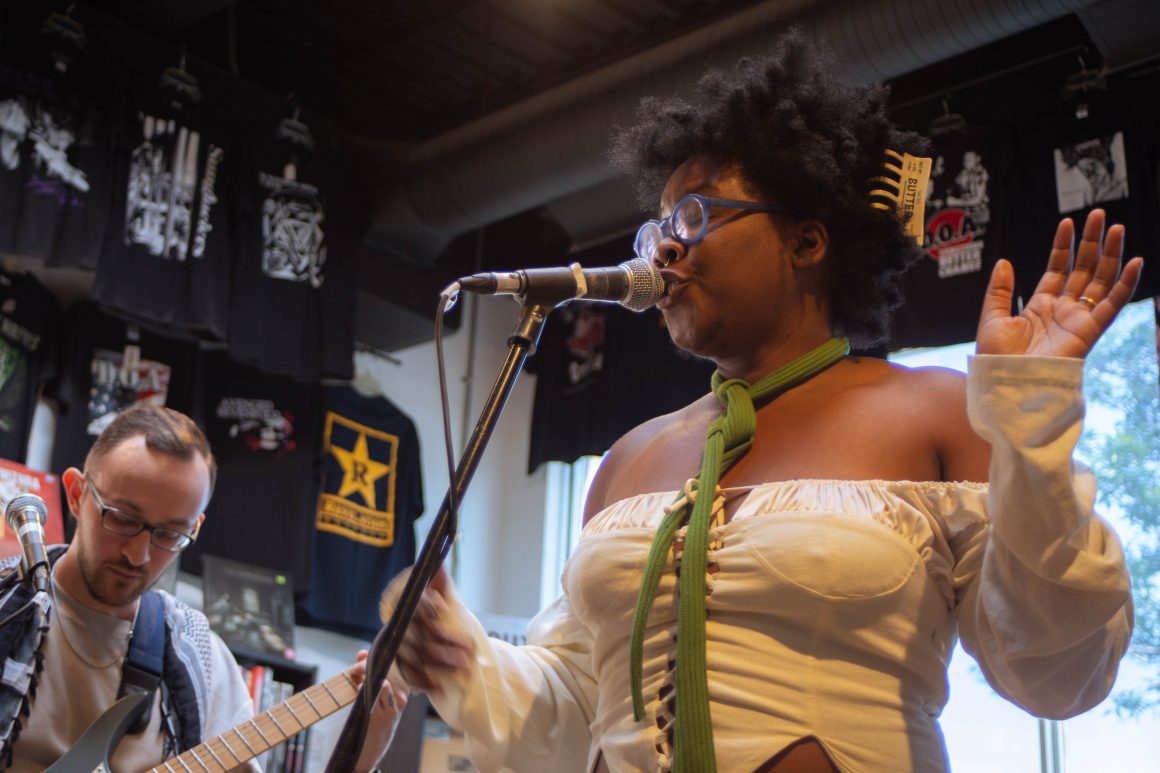
A beginner’s guide to Sled Island 2025
By Hannah Caparino, June 19 2025—
Sled Island has been Calgary’s number one festival to celebrate local and international music and art through a variety of performances. Since 2007, the Sled Island lineups have featured all kinds of artists like LATISHA, Ginger Beef and Bartees Strange, as well as comedians like Gabby Rose.
Sled Island 2025 will be showcasing Calgary based bands and performers. A fan favourite at Block Heater 2025 is the band, Sunglaciers. More local bands like Pinball 1975 will be making their Sled Island debut while returning gems like Tea Fannie and The Collective will reappear at the festival. While local artists make up a good amount of this year’s lineup, the festival will welcome artists from all over Canada and beyond.
The four-person Japanese punk rock band formed by Accorinrin, Yoyoyoshie, Hirochan and Kahokiss, make up Otoboke Beaver, and will be the featured artist at the festival, bringing their intense punk sound to the Palace Theatre stage. Alongside performing at The Palace Theatre, Otoboke Beaver will also serve as the guest curator for the festival. The band handpicked some acts that will be performing at the festival; including bands such as Black Ends who originated from Seattle and The Mummies from Oakland.
The festival will host all the performers throughout a variety of venues in Calgary. From iconic locations like the #1 Legion, Commonwealth and King Eddy. Each of the venues for Sled Island have varying capacities, ranging from 120 to 1000 people. While Sled Island aims to be open to all ages, some locations have age restrictions due to specific services provided. Smaller venues like the Dandy Tasting Room and Loophole Coffee Bar are meant to be more intimate spaces with a maximum of 50 to 60 people in each location, all attendees can experience music on a smaller scale compared to the larger venues. Accessibility is location dependent but many locations are wheelchair accessible through the main entrance of each building, the only places that are excluded are Sloth Records and Vern’s. For information about gender neutral bathrooms, kits and available services, check out the Sled Island venue page here.
In terms of general festival knowledge, much of the programming tailors to a variety of genres that everyone can enjoy. From punk rock to experimental indie, the festival is a showcase of all kinds of music and original songs. Each performer brings their own flavour and style, envisioning how the music industry can change and evolve from the ground up. Events like Sled Island are a way for individuals to discover their new favourite artists and highlight all the talent that is sprinkled throughout the city.
Sled Island 2025 will take place from June 18 to 22 and have multiple locations. For those who cannot attend the festival, CSJW 90.9 will also provide live performances for artists and performers to share their music.
Information about Sled Island’s lineup and schedule can be found on their website. Tickets can be bought either individually or in bundles and readers can look online here.
